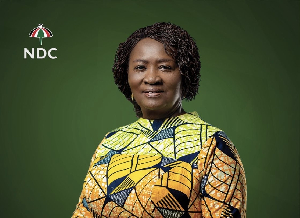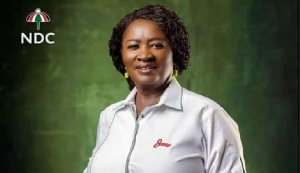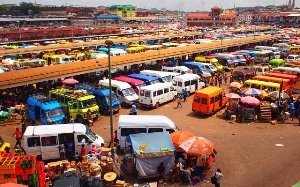Accra’s Seismic Risk: Are We Concerned Enough?
Summary:
This article builds on first article in this series by establishing the significance of seismic risk. It goes on to discuss factors that contribute to its increase in Accra, and then presents a point of view on what the current level of risk is. The position of the article is that Accra’s current seismic risk is not manageable, and requires the ardent attention of both government and civil society.
Introduction:
Natural and man-made disasters are faced by all societies and are a part of the human experience. Generally, society is faced with a continuum of disaster risk ranging from: everyday risks, such as exposure to malaria-causing mosquitos; to small disasters such as vehicular accidents, or more common these days, Benz 207 tro-tro accidents; to large disasters such as epidemics, floods and earthquakes. Whereas everyday risks are faced on a continuous basis, large disasters are generally infrequent. When left unchecked, all three forms of disaster could in the end lead to significant loss of life and/or economic downturn. As a result of this, it is important that equal attention be paid to tackling problems across the whole spectrum of risk. In other words, focusing on problems on only one end of the risk spectrum is not good practice, and is similar to putting all of one’s financial investment in one stock, rather than the diversification of one’s portfolio. The recent global financial meltdown has shown how unwise and risky this can be. In fact, it can be unequivocally stated that cities/communities that engage in such disaster risk reduction programs are not practicing good governance.
Earthquake Disasters:
Earthquakes fall into the category of large disasters. Among the different types of large natural disasters, earthquakes are certainly one of the most destructive, if not even the most devastating. The destruction caused by a major earthquake can surpass that of an atomic bomb, and they are known in history to have wiped-out whole communities, and caused a significant reversal of the socio-economic development of certain countries. For cities/communities that have not experienced a major earthquake over a given period, they risk falling into the temptation of consciously or unconsciously assuming that such an event will not happen. This can have dire consequences, a case in point being Haiti, which had not experienced a major earthquake for over 200 years. It is therefore prudent that seismic risk reduction be an integral part of the development agenda of all earthquake-threatened cities and communities. This is in line with the core objectives of the United Nations’ Hyogo Framework for Action that seeks to build the resilience of communities and nations to disasters.
Risk Factors:
The 1939 earthquake in Accra resulted in seventeen deaths and destroyed about a thousand buildings. It was felt in many of the regional capitals of the country. Since then Accra has changed significantly, and what Accra is today, cannot be compared in any way with what it was then. Currently, the Greater Accra Metropolitan Area (GAMA) is a sprawling metropolis extending into the Central and Eastern regions. It accounts for a population of over three million people, with peak population densities as high as 250 people/hectare. The GAMA area also accounts for a large portion of Ghana’s Gross Domestic Product (GDP), and attracts a large chunk of foreign direct investment into the country.
The major factors that contribute to an increase in the seismic vulnerability of a city or community include: the existence of active seismic sources close to the city/community; poor city/community planning, with particular reference to end-use planning; buildings and infrastructure not designed and constructed to be earthquake-resistant; poor emergency-preparedness planning, high population densities, and a general lack of an understanding of the level of seismic risk faced by the populace.
Accra is faced with the problem of rapid uncontrolled urbanization, and this contributes to increasing the cities vulnerability to a major earthquake event. The GAMA area keeps expanding with buildings with permits and those without (illicit construction) springing up everywhere. The rapid urbanization is due in part to considerable rural-urban drift, and the fact that the city is both the administrative and commercial capital of the country. This has put a lot of burden on the already limited existing urban services, and has left city authorities scrambling to keep up with the increased demand. With the limited capacity of city authorities to effectively regulate and give good oversight to development processes, there seems to be no end to the haphazard and poorly planned development of Accra; the city therefore seems to be on the sure path to a CATASTROPHE.
If there is any consolation to go by, it is in the fact that the case of Accra is not unique. Other earthquake-threatened cities/communities in the developing world are faced with a similar dilemma. In this regard, the medium seismicity of Accra could be thought of as a blessing, in comparison with the high seismicity of cities such as Kathmandu Valley in Nepal and Bogata in Columbia. However, if based on their higher seismicities, these cities act to reduce their seismic vulnerability, but Accra does little or nothing to reduce its own, our supposed blessing, would in turn, turn out to be our demise.
Risk Level:
It has been noted in the technical community that whereas the development of the built environment, has led to a reduction in the seismic risk faced by earthquake-threatened cities of the developed world—by a factor of as much as ten from fifty years ago—the same cannot be said about developing countries. For cities/communities in the developing world, the lethality of earthquakes has been noted to be on the increase, with increases for some cities being quoted to be as high as sixty times. This is certainly unacceptable, and has been described as the new “seismic gap” by some researchers.
It is important to emphasize that the objective of seismic risk reduction is not to remove the risk, but to bring it to a manageable level. A question that could thus be asked is what achievable policy goals should be set by a city/community? This has been aptly answered by Dr. Tucker of GeoHazards International based in the US, who recommends the acceptable level of seismic risk for any country/city to be the case where a country/city can expect to develop its economies, societies, governments, and cultures free from the threat of periodic reversals by earthquakes. Based on this, earthquakes such as the 1972 Nicaragua and 1986 El Salvador earthquakes that cost 40% and 30% of the respective GDP of both countries, and the recent Haiti earthquake that flattened most of Port-au-Prince, are objectionable, and require national and global attention.
The author is of the view that the seismic risk of Accra cannot be said to be at a level, which would not result in a significant reversal of the country’s economy if a major earthquake occurs.
Conclusions:
The increase in the seismic vulnerability of cities in the developing world, and for that matter Accra, can be likened to a killer disease that has been dormant for a while, and is now maturing. As a responsible society, it is important we amass the entire arsenal at our disposal to effectively fight this canker; posterity will not forgive us if we do not.
Nii Kwashie Allotey, Ph.D., P.Eng., Email: nii50@inbox.com












